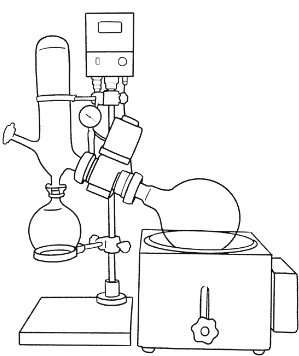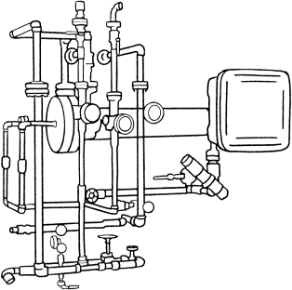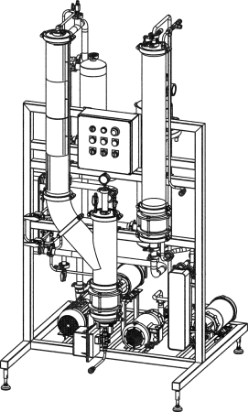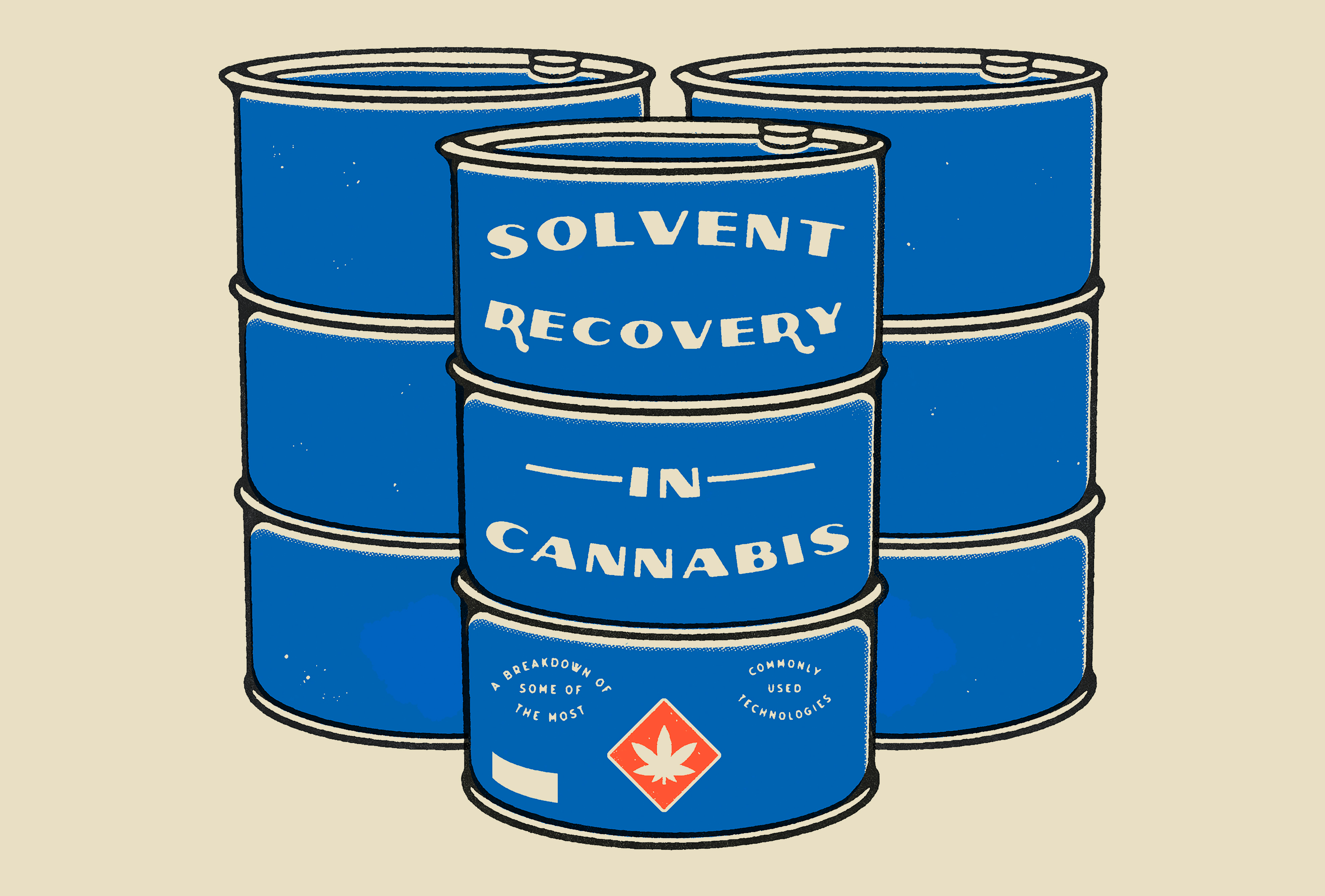If you are outfitting a cannabis or hemp extraction facility with equipment, you are probably being bombarded with a lot of terms you may not be familiar with. There are a lot of ways to recover solvent, some more effective than others. This post will break down the different styles of solvent recovery commonly used in cannabis extraction, and the pros and cons of each method.

Rotary Evaporator
A rotary evaporator, or “Rotovap” is a lab-scale device which has recently been adopted for the cannabis and hemp industry. Solution is placed in a round glass boiling flask, which is then lowered into a heated liquid pool and rotated. The heated liquid warms the boiling flask up to the solvent’s boiling point, while the rotating spreads the solution in a thin film along the inside of the flask. This allows for the solvent to gently and rapidly evaporate, producing a concentrate with reduced thermal degradation.
- Gentle, uniform heating reduces degradation compared to a Pot Still
- Thin film of solution promotes rapid solvent evaporation
- Simple technology
- Boiling flasks have a narrow opening, making it difficult to retrieve a viscous cannabis extract
- Systems are made of glass, increased risk of breaking components
- Batch operation is difficult to scale, and made harder by the fragile nature of rotary evaporators

Batch Evaporator / Pot Still
This is as simple as evaporation can get. A vessel is filled with solution, and heated until the solvent boils off. Most commonly used versions of this include some form of mixing device to promote even heating. The batch is held at an elevated temperature until a satisfactory amount of solvent is removed, leaving behind a concentrated cannabis extract.
- Simpler functionality, not much that can fail
- Less expensive
- Low surface area of solution contacting heating surface limits the evaporation rates which can be achieved
- Batch operation - non-continuous processes are difficult to scale
- High residence time - evaporating in large batches requires all extracts to be held at an elevated temperature for long periods of time, which can promote thermal degradation
- Uniformity - even with mixing devices it can be difficult to achieve uniform heating in a pot still. As a result, there is often a gradient of much hotter solution near the edges and cooler solution in the center

Membranes
These systems are relatively new technology within the industry. Essentially how they work, is by passing the solution through a specialized selective membrane under vacuum. The membrane selectively removes pure solvent, leaving behind concentrated cannabis extracts. It is an interesting method due to the high throughput and low heating required.
- High throughput
- Low energy input
- Minimal thermal degradation
- Generally membranes are not able to remove more than 90% of solvent
- Newer technology, systems aren’t “dialed in” yet

Falling Film Evaporators
The term falling film refers to an evaporator where a thin film of solution falls on a heated surface. In most falling film evaporators, the heated surface is a shell and tube heat exchanger. For example, in our systems the solution falls in a thin film on the surface of 55 tubes. Evaporating using a Falling Film creates a very high surface area interaction, while keeping the residence time on the heat relatively low. Also, this allows the evaporation process to operate continuously, which is great for high throughput processes and makes it much more scalable.
- High throughput
- Low residence time minimizes thermal degradation
- Continuous operation
- Scalable
- Can remove up to 99% of solvent
- More complicated than other systems, typically leads to increased cost
- Requires relative precision, low quality systems may not perform as they should
Conclusions
As you can see, there is not necessarily a single solution which will suit all solvent recovery needs. When selecting solvent recovery equipment you need to consider first what needs you have: Do you need all solvent removed? Is thermal degradation a big concern? What throughput do you realistically need? For example, large scale facilities may want to use a combination of a membrane and a falling film, or multiple falling films. Extractors running smaller batches, on the other hand, may consider just running a falling film slowly or a handful of rotovaps. A lab that does a lot of R&D may want a solution for high throughput and a rotovap as well for smaller trials.
Falling film evaporators are a high-throughput, low-degradation option which can fully dry extracts. As such, we feel that the falling film represents the best of all worlds and is a great all-around solution. However, no two labs are the same, and their solvent recovery needs will reflect that.
Interested in buying an FFE? Contact us today for a quote on one of our FFE models.
Request a Quote